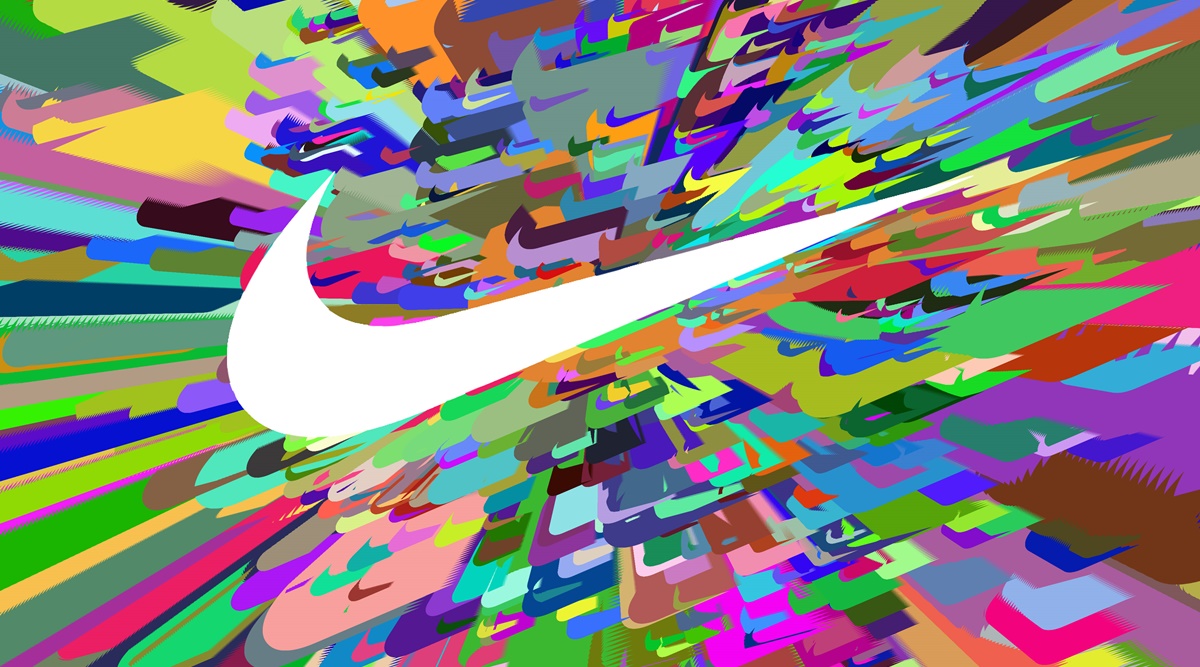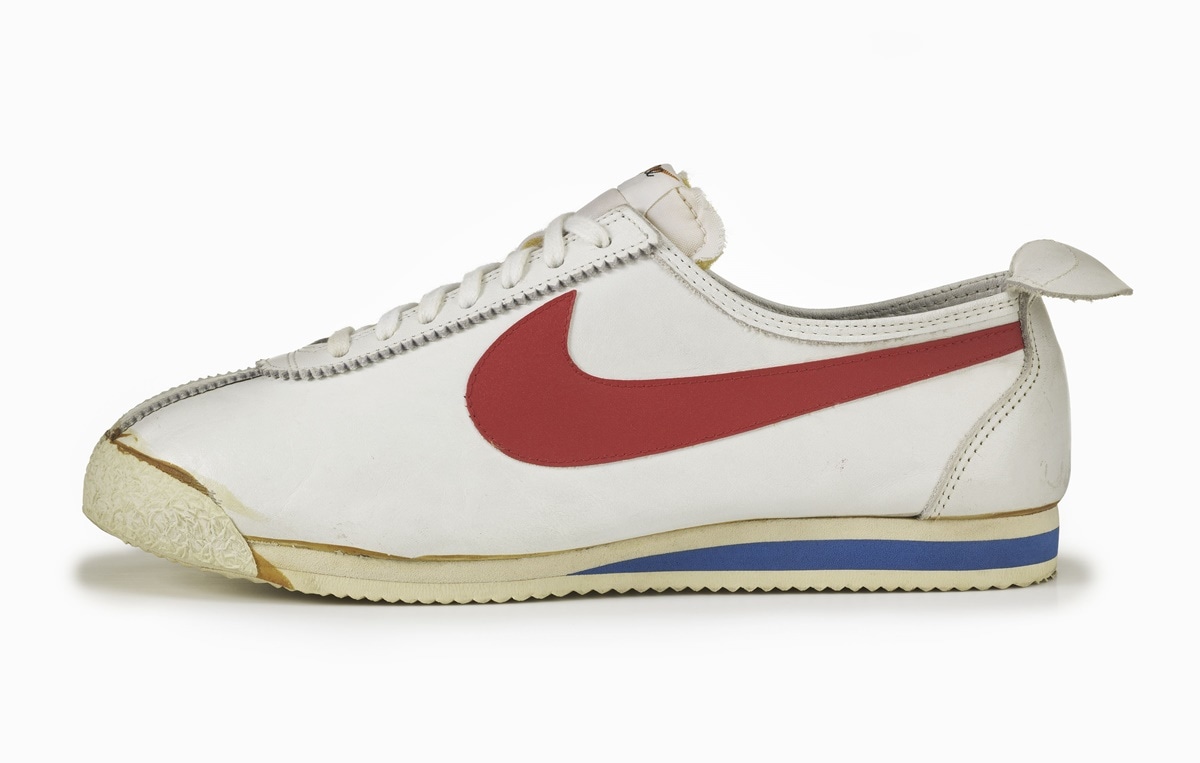 As Nike reaches its golden anniversary, it’s worth considering how the swoosh became the branding earwig of the millennium, tunneling into our brains to colonize our imaginations. As the brand turns 50, it’s not letting up. (Adam Ferriss/The New York Times)
As Nike reaches its golden anniversary, it’s worth considering how the swoosh became the branding earwig of the millennium, tunneling into our brains to colonize our imaginations. As the brand turns 50, it’s not letting up. (Adam Ferriss/The New York Times)Written by Vanessa Friedman
For its 50th anniversary this year, Nike could have done a lot of things. It could have done what many fashion brands do and had a series of enormous parties in multiple capitals around the world with special guests like LeBron James and Billie Eilish and Naomi Osaka and Travis Scott, all of whom work with the brand. It could have issued a limited-edition coffee-table tome full of glossy photos of sneakers treated like art. It could have created “50 and Fabulous” merchandise (or something).
But Nike has done none of that. In fact, the only sort-of anniversary thing it has done thus far is roll out the old Spike Lee character Mars Blackmon, the better to illustrate a new “anthem” called “Seen It All,” and suggest that, actually, we haven’t. Which may be something of the truth — if there’s one thing you learn in both sports and fashion, it’s that there is always someone coming up behind you — and also something of a humble brag.
Because after a half-century there is no escaping the fact that, if Goldman Sachs was once described as the “vampire squid” on the face of humanity, Nike has become part of the root system that underlies the culture. And not just sneaker culture.
Best of Express Premium
Nike, named for the Greek goddess of victory, has become not just the most valuable apparel brand in the world (worth more than twice as much as Adidas, its closest sportswear rival, and ahead of Louis Vuitton, Gucci and Chanel). It is part of the movies we watch, the songs we hear, the museums we frequent, the business we do; part of how we think about who we are and how we got to here.
It is, said Robert Goldman, co-author of “Nike Culture: The Sign of the Swoosh” and professor emeritus at Lewis & Clark College, “an emblem of individuality, in an age where individuality has become rampant” that also happens to be one that can be read by the masses.
 An undated photo provided by Nike shows a Nike tennis shoe. (Nike via The New York Times)
An undated photo provided by Nike shows a Nike tennis shoe. (Nike via The New York Times) Forget Niketown. To a certain extent we are all citizens of Nikeland now.
It has its founding fathers: Phil Knight, a former University of Oregon runner, and Bill Bowerman, his college coach, who famously poured rubber into his wife’s waffle iron to make a new running sole. It has an anthem: “Just Do It,” introduced in 1988. Most of all, maybe, it has an emblem.
Just Do It
Ask people who work at Nike or with Nike why they wanted to join the company, and many will start by telling you about their childhood.
John Hoke, the chief design officer of Nike, who has been with the company 30 years, was a preteen when he wrote a letter to Knight offering a new shoe design, and got a note and a pair of waffle trainers in return. (He has a picture of himself wearing the shoes while playing tennis in his office at Nike headquarters in Portland, Oregon.)
Virgil Abloh, the late Off-White and Louis Vuitton designer whose reinvention of Nike’s most famous shoes applied a Warholian approach to sneakers, used to talk about sleeping with a pair of Jordan 5s “at the end of the bed just so I could see it in the morning” when he was growing up. Yoon Ahn, the designer behind Japanese streetwear brand Ambush who has been working with Nike since 2018, said that Nikes were the first pair of shoes she bought with her own money. She now has a storage room full of them.
It is a reflection of the way the company has woven itself into the social memory bank.
In 1992, Knight gave an interview to Harvard Business Review in which he said one of Nike’s biggest breakthroughs was — not the waffle sole or the Air Force 1 or the Air Jordan or Flyknit (those were important, of course) but — the realization that they weren’t just selling sneakers.
Created by Carolyn Davidson, a recent graphic design graduate of Portland State University, and trademarked in 1971, the swoosh was supposed to be a nod to Nike’s wings, but also a subconscious reference to a check mark. And while it was originally treated with some suspicion by Knight, who thought it looked like “a big comma,” according to Goldman, it has morphed, he said, “from a sort of meaningless smudge” into an emblem swollen with associations.
(Nike briefly considered burying the swoosh in 1998 after reports of unsafe working conditions in its subcontractor factories in Asia as well as allegations of child labor made it into a poster child for corporate ignorance and caused activists to label the sign the “swooshticka.” While the uproar did lead to some public penitence on the part of Nike executives and new business practices, however, the brand ultimately stuck with its swoosh.)
That’s why, as Nike embraced the heroic in the form of Michael Jordan, its first and most significant partner, giving him control over his own brand in a way no sports star had had before; as they famously bought up athletes and teams (more than 10,000 at last count) and sliced and diced their specialties into sports — from running and basketball into tennis, soccer, ice hockey and skateboarding; and as they named buildings on their campus after Serena Williams and James, they did something else: They wooed an entire universe of non-sport subcultures.
And subcultures created sneakerheads. The swoosh became their not-so-secret sign.
The OG Sneakerhead
It’s possible that the first public sneakerhead was actually the goggle-eyed New York Knicks fan Mars Blackmon, played by Lee in Air Jordans and a Brooklyn cycling cap, in Lee’s 1986 film “She’s Gotta Have It.”
The character’s obsession with his Airs, which he wore in bed, caught the eye of Nike’s ad gurus, who asked the indie Lee to make some commercials with Jordan. It was a pairing that transcended sport and film to create a new kind of franchise.
“They realized something was going on,” said Fraser Cooke, a former DJ and hairdresser who had co-founded FootPatrol, one of the early cult sneaker stores in London. Jordan plus Lee led to urban communities, and urban communities were birthing hip-hop, and hip-hop culture was on its way to becoming “the dominant subculture,” complete with Nikes as part of the dress code. Suddenly sneaker executives started to think like social anthropologists.
Cooke met Mark Parker, then Nike’s CEO, in 2003, when Parker and a few other colleagues were on a covert tour of London’s underground (the substrata of cool, not the subway system). Shortly thereafter, Nike offered him a job as what amounts to an ambassador of edge, romancing what’s bubbling up and dousing it in the world of swoosh.
“My job was to work with outsiders,” said Cooke, who now has the very elaborate (and constantly changing) title of senior director, global special projects and catalyst brand management.
Since then, he has been responsible for bringing in a host of edgy, not-part-of-sports names with their own followings: Comme des Garçons, Riccardo Tisci (starting when he was at Givenchy), Kim Jones of Dior, Abloh (long before he was a twinkle in Louis Vuitton’s eye), Chitose Abe of Sacai. (There’s an arms race of sorts going on between sneaker brands for fashion partners, as lines between different segments of “apparel” get mushier and mushier.) Catalyst brand management also spearheads relationships with other nontraditional Nike partners like Travis Scott, Drake and Eilish.
The point is to design “not items but ideas,” Hoke said. When artist Tom Sachs signed on more than a decade ago, he said he wanted to build a solid bronze skateboard ramp. (That didn’t go over too well, but it led to the Mars Yard shoe and a foray into melding Nikes and the moon shot.) Which is why this group of outsiders are called catalysts rather than collaborators, collaborators have become a dime a dozen — and pretty starkly transactional rather than theoretical.
There Is No Finish Line
“It’s ingeniously aligned with almost every super-important cultural moment and person,” said Brahm Wachter, the head of streetwear and modern collectibles at Sotheby’s. It can toggle from Nyjah Huston to “Forrest Gump”; Mia Hamm to “Lost in Translation”; Kobe Bryant to “The Breakfast Club”; Osaka to “Back to the Future.”
From the Met Gala, courtesy of Williams, who wore a pair of chartreuse Nike x Off-White “Air” Jordans with her flower-sprinkled yellow Versace gown to co-host in 2019, putting Nike on the same footing as Anna Wintour’s Manolos, to fronting Colin Kaepernick after he took a knee during the national anthem.
There’s a through line to that from Jordan’s first Air Jordans, which were banned from the basketball court for not adhering to the NBA dress code. At the time, Knight told the Harvard Business Review the ban “was great! We actually welcome the kind of publicity that pits us against the establishment, as long as we know we’re on the right side of the issue.”
The irony is, of course, that at this point Nike pretty much is the establishment. It is, Wachter said, “part of our heritage.”
That is why of all the footwear Sotheby’s has sold since it decided in 2020 to create a sneaker category and hold regular auctions — now eight to 10 a year — about 95% is Nikes. It is why the most expensive shoe ever sold at auction is a Nike. (That would be Kanye West’s Nike Air Yeezy prototypes, which Ye wore at the 2008 Grammys and which were bought in 2021 for $1.8 million.) And why there are Nikes in the permanent collection of the Metropolitan Museum of Art.
Nike has become, Goldman said, “a consumer product that somehow appears to challenge the idea of consumerism.” That makes it awfully close, he said, to “the modern condition.”
This article originally appeared in The New York Times.
- The Indian Express website has been rated GREEN for its credibility and trustworthiness by Newsguard, a global service that rates news sources for their journalistic standards.

